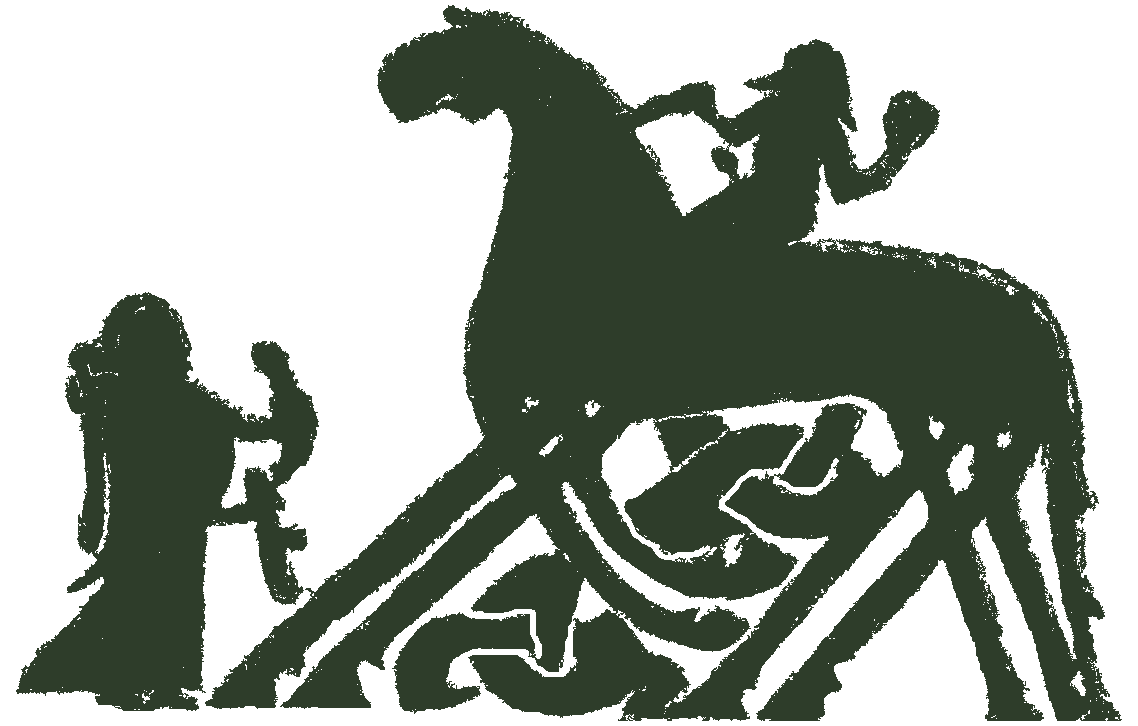in progress
This section of Gylfaginning tells the story of how Freyr falls for the giantess Gerðr and how he goes about securing her hand in marriage
text
[excerpt from] Gylf ch. 37b
37b.
Það var einn dag er Freyr haf... | It happened one day that Frey... |
[status: unverified copy]
commentary
context
Gylfaginning, which is part of Snorra Edda, was composed in Iceland in the 13th century, and holds the stories of many of the Pre-Christian myths of northern Europe. It is believe to have been composed by the Icelander Snorri Sturlusson. Snorra Edda consists of three separate parts, Gylfaginning, Skaldskápamáland Háttatal, all functioning together as a greater work and guide for the aspiring medieval poet and storyteller.
commentary
The story of Freyr's wooing of the jötunn woman Gerðr if found in Snorris Gylfaginning as well as in Skírnismál. In this myth, the hieros gamos or "holy wedding" between Freyr and Gerðr is a mythological motif which may refer to ideas of origins, presented in an erotic framework which gives reference to ideas of divine decent of rulers and royalty and fate. As an example of a myth underlining divine, Freyr represents the divine ancestor of Swedish ancient royalty and rulers. Elements in Skírnismál, such as being seated in the high seat as well as the gifts of the apple, ring and staff/sceptre gives iconographical references to European rulership. The symbol of a mythical female as part of a rulers initiation is also found in Irish mythological tradition. Paralell to Freyr being a figure of divine ancestry of the Swedes and the ancient Ynglingar, the Earls of Hlaðir in western Norway build their myth of origin, as told in Háleygjatal, on the union between Óðinn and the jötunn woman Skaði. The elements of a holy and deciding union between somewhat opposites underline the importance of the political unions and marriages building alliances of power, bridging the ideas of hieros gamos from the mythological to the contemporary social contexts.
For more, see for example:
Simek, Rudolf (2007), Transl: Angela Hall. Dictionary of Northern Mythology. Cambridge: D.S. Brewer. pp. 146, 290-291.
Steinsland, G. (1991), Det hellige bryllup og norrøn kongeideologi, Oslo: Solum.
Steinsland, G. (2000), Den hellige kongen. Om religion og herskermakt fra vikingtid til middelalder, Oslo: Pax Forlag.
Steinsland, G. (2005), Norrøn Religion. Myter, Riter, Samfunn. Oslo: Pax Forlag. pp 399-420.
Sundqvist. O. (2002), Freyr's offspring. Rulers and religion in ancient Svea society. Acta Universitatis Upsaliensis, Historia Religionum 21, Uppsala.
(Contributed by Liv Marit Aurdal.)
tags
Main text: Gylfaginning
Attributes: Woman Female Landscape Giantess marriage between god and giantess Island Ring Sword Nine Female deity
Named things:
Text sections: SnSt Gylf 37bIII
